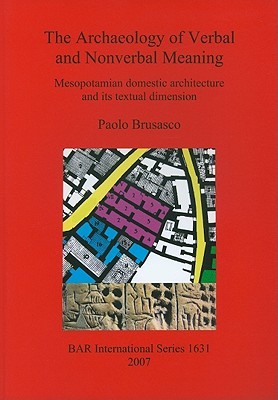
- We will send in 10–14 business days.
- Author: Paolo Brusasco
- Publisher: British Archaeological Reports Oxford Ltd
- ISBN-10: 1407300458
- ISBN-13: 9781407300450
- Format: 20.8 x 29.2 x 1 cm, softcover
- Language: English
- SAVE -10% with code: EXTRA
Reviews
Description
Mesopotamian houses excavated at Ur and Nippur represent a unique archaeological context for the analysis of the interaction of verbal and nonverbal sign systems in that archaeologists can combine archival evidence of the III-II millennium BC with well-preserved house layouts. This work provides a general framework for the interpretation of other sites where textual evidence is absent or not in context. Although the aims of the book are multiple, the main objective is theoretical: The author goes beyond the interpretation of Mesopotamian domestic sociology and offers a semiotic theory of verbal and nonverbal meanings, useful for archaeology in general.
EXTRA 10 % discount with code: EXTRA
The promotion ends in 17d.23:44:03
The discount code is valid when purchasing from 10 €. Discounts do not stack.
- Author: Paolo Brusasco
- Publisher: British Archaeological Reports Oxford Ltd
- ISBN-10: 1407300458
- ISBN-13: 9781407300450
- Format: 20.8 x 29.2 x 1 cm, softcover
- Language: English English
Mesopotamian houses excavated at Ur and Nippur represent a unique archaeological context for the analysis of the interaction of verbal and nonverbal sign systems in that archaeologists can combine archival evidence of the III-II millennium BC with well-preserved house layouts. This work provides a general framework for the interpretation of other sites where textual evidence is absent or not in context. Although the aims of the book are multiple, the main objective is theoretical: The author goes beyond the interpretation of Mesopotamian domestic sociology and offers a semiotic theory of verbal and nonverbal meanings, useful for archaeology in general.


Reviews